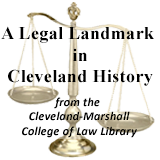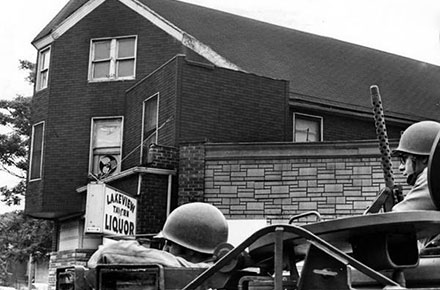The Glenville Shootout and the Trial of Fred Ahmed Evans

In Brief
The spring of 1968 had been a tense one across the nation following the tragic assassination of Civil Right Movement leader, Dr. Rev. Martin Luther King, Jr. on April 4th of that year. While cities like Washington D.C., Baltimore, and Chicago erupted with rioting, Cleveland remained relatively calm thanks in part to the leadership of Cleveland Mayor, Carl B. Stokes, the first black mayor of major U.S. city.
Then, on the evening of July 23, 1968, shots were fired on a narrow street in the Glenville neighborhood on Cleveland's racially troubled East Side, erupting into a full-scale gun battle between Cleveland police and black snipers. An hour and a half later, seven people lay dead (three were Cleveland policemen) and 15 were wounded. Five days of violence and rioting ensued until Mayor Stokes called in the National Guard and order was finally restored1. Read more about the shootout.
Local black militant, Fred Ahmed Evans was held accountable and charged with seven counts of first-degree murder for which he was found guilty and sentenced to death in the electric chair. Evans' death sentence was later reduced to life in prison, where he died of cancer in 1978. Find out more about the trial.
Site Features:
- Background on Fred Ahmed Evans
- The Shootout
- Legal Proceedings of Fred Ahmed Evans:
- Browse all legal documents
- Browse all newspaper articles
- Browse all photographs
Related Cleveland Memory Material: The Glenville Shootout.
Credits & Appreciation
The content of this website was the project of Digital Content Librarian, Jacquelyn McCloud and Kevin Garewal, Collection Development/ Acquisitions Librarian for Law Library at the Cleveland-Marshall College of Law, Cleveland State University.
1Louis H. Masotti & Jerome R. Corsi, A Staff Report to the National Commission on the Prevention of Violence, Shoot-Out in Cleveland-Black Militants and the Police: July 23, 1968 (1969). p.xii





